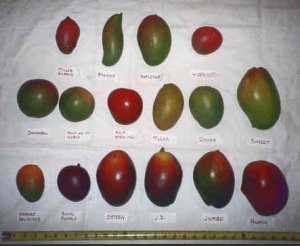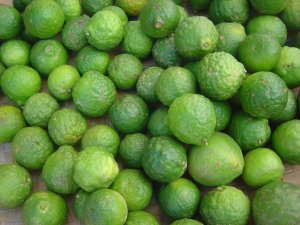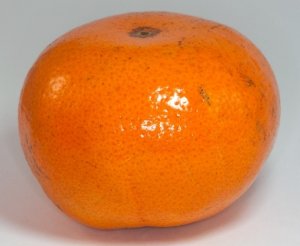iLander
Ideal_Rock
- Joined
- May 23, 2010
- Messages
- 6,731
As someone who has grown mangoes for many years, I thought I'd pass along what I've learned so that PSer's can enjoy a wonderful summer fruit!
When you're buying a mango in the grocery store, don't pay much attention to color; there are many varieties of mango, with many different fully-ripe colors. Some are solid green when ripe, some are golden yellow, still others are red and green, red and orange, I could go on since there are 500+ varieties!
What you want to do is smell the stem end of the mango. It should smell vaguely of mango!
If it doesn't, chances are you will end up with a bland, flavorless mango that has been refrigerated too long. It will still be sweet, but not delicious. You want delicious. If it's only a little bit soft, don't worry, it will soften up. If it's like a rock, it will only soften a little, so pick one that's a tad soft. If it's very soft, and you'll eat it in a day or two, that's fine.
If it's only a little bit soft, don't worry, it will soften up. If it's like a rock, it will only soften a little, so pick one that's a tad soft. If it's very soft, and you'll eat it in a day or two, that's fine.
If you remember the old days of mangoes with a stringy inside that tastes like turpentine, don't worry, that's all in the past. Today's mangoes are cross-bred specifically to get rid of all that nastiness. There are so many different flavors of mango, too! Some are cloyingly sweet, like honey (golden yellow), others are tangy with a citrus kick, others are just a funky, thick, sweet mango flavor. Smell them before buying for best flavor. If you're lucky enough to live in a big city, with a fabulous grocer, you can try all the delicious flavors all summer long!
The nice part about mangoes is that they don't require a lot of pesticides to grow (so less pesticides in you!), because they are in the poison ivy family. This keeps most insects away. But NEVER bite into a mango! The poison ivy part is just below the skin surface, and it can cause quite a rash around your mouth. Peel and eat, that's how you do it.
YUM!


When you're buying a mango in the grocery store, don't pay much attention to color; there are many varieties of mango, with many different fully-ripe colors. Some are solid green when ripe, some are golden yellow, still others are red and green, red and orange, I could go on since there are 500+ varieties!
What you want to do is smell the stem end of the mango. It should smell vaguely of mango!
If it doesn't, chances are you will end up with a bland, flavorless mango that has been refrigerated too long. It will still be sweet, but not delicious. You want delicious.
If you remember the old days of mangoes with a stringy inside that tastes like turpentine, don't worry, that's all in the past. Today's mangoes are cross-bred specifically to get rid of all that nastiness. There are so many different flavors of mango, too! Some are cloyingly sweet, like honey (golden yellow), others are tangy with a citrus kick, others are just a funky, thick, sweet mango flavor. Smell them before buying for best flavor. If you're lucky enough to live in a big city, with a fabulous grocer, you can try all the delicious flavors all summer long!
The nice part about mangoes is that they don't require a lot of pesticides to grow (so less pesticides in you!), because they are in the poison ivy family. This keeps most insects away. But NEVER bite into a mango! The poison ivy part is just below the skin surface, and it can cause quite a rash around your mouth. Peel and eat, that's how you do it.
YUM!










300x240.png)